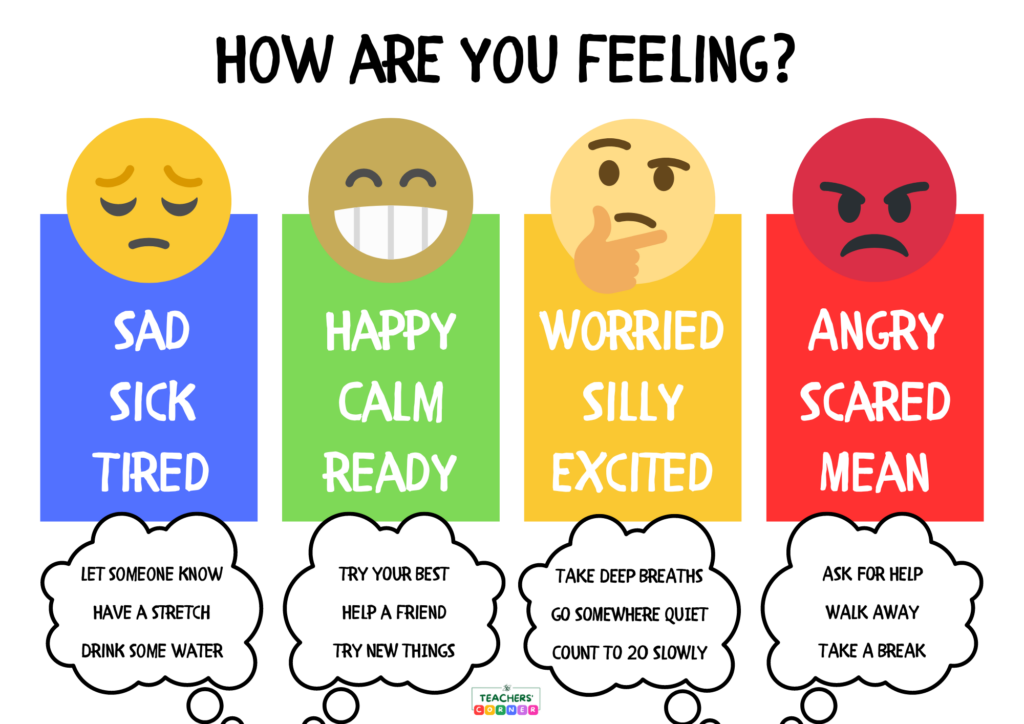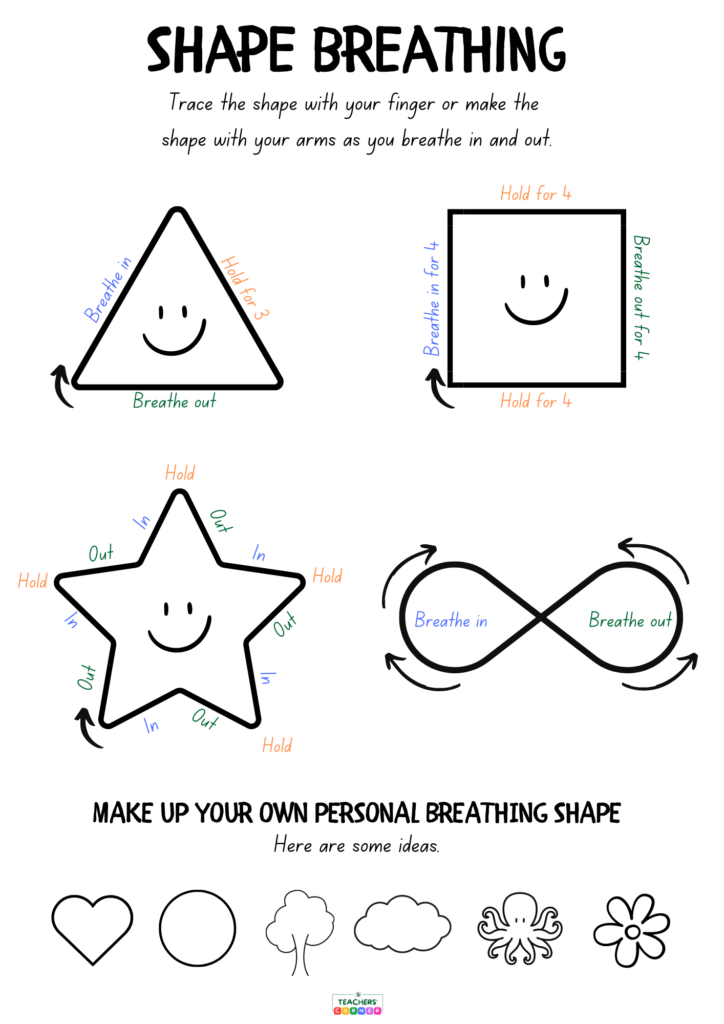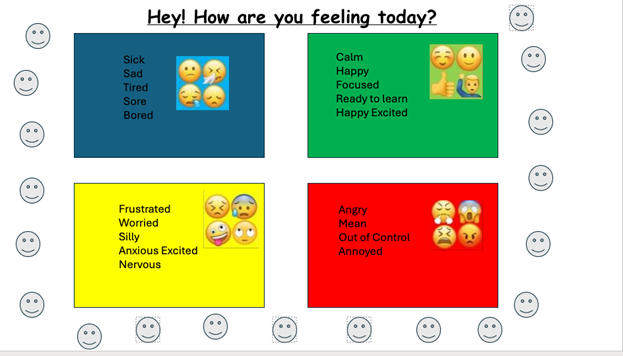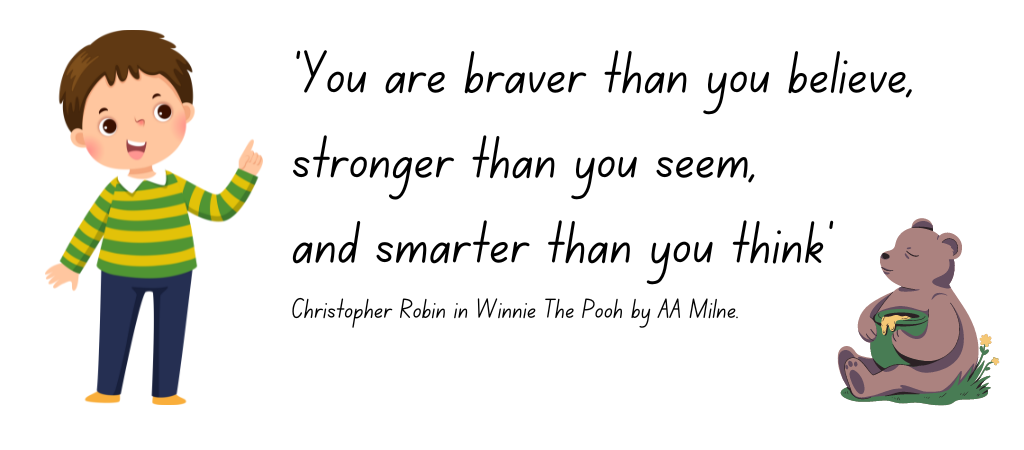Wellbeing is a hot topic at the moment and is set to remain that way as it is incorporated into the new Primary Curriculum Framework from Junior Infants all the way to Sixth Class and beyond. Guest Teacher Author, Roisín O Rourke, shares some of the ways she has integrated the theme into her class.

With it being such a broad subject and incorporating so much material, it can be overwhelming to know where to start with Wellbeing. I’m sure many have been incorporating various approaches into their daily routines for a while now but if not, here’s a few approaches that have worked for us.
Wellbeing Wall/Area
Having an area designated within the classroom will help both younger and older children find what they need, when they need to.
It can be helpful to have easy to understand visuals of feelings such as Zones of Regulation (if this is something your school/you are trained in) and prompt cards with questions available for students to see and use.

A Wellbeing Area/Wall doesn’t have to be mega fancy with lots in it – this could be overwhelming for your students. Start off simple and as you introduce a new element/strategy, add it to your area as a tool they can use themselves.
For example, a starting focus might be how certain types of breathing can help us calm down and that different types of breathing work differently for different people. I introduced shape breathing and so I have a large star on my Wellbeing Wall. If a student is feeling overwhelmed they can trace the shape of the star and have prompts of ‘breathe in’ and ‘breathe out’ as they trace each side of the star.

Daily Check-in
Addressing wellbeing can be incorporated into many areas across your school day. This could take the form of check ins with your class as they come into the classroom in the morning. At a glance, you can assess who needs a little extra TLC any given morning without having to physically ask each child how they are feeling. Talking can be hard for kids first thing in the morning, for adults too!
For younger kids, this form of a check in allows them to recognise that we can feel a range of different emotions each day. For older kids, it allows them to take responsibility for how they are feeling and also allows for exploration of mechanisms in how our feelings can be transformed once we know how we are feeling.
Here’s an idea of how it might look on your wall.

The little faces around the chart could be pictures/selfies of the kids in your class. It could be a smiley face with a number on it. The number could be an allocated number you give to each child that no one else knows. You’ll know best what would suit your class.
As you teach or explore each feeling, add the explored vocabulary around the area. Here’s a printable list of vocabulary cards you might like to make use of.
You could leave some spare cards near this area in your room for children to add to independently or collaboratively to give them ownership over the area too.
Equipping our kids with the language to tell us how we are feeling is a great starting point for welcoming Wellbeing into your room and using it as a methodology to build stronger relationships with the kids.
Some other things to try.
Well-being Buddies
Pair younger children up with an older child/children and ask the older ones to designate a few minutes of yard time for a check in. This could be as simple as a Walk and Talk partnership or finding a seat and having a little chat.

It provides older children with a mentor role and allows younger children the chance to have a buddy that they can look for if or when they need someone on yard that isn’t a teacher, for example, finding someone to play with, choosing a game to play as a group, etc. It also allows older children to use a range of skills that can be built on throughout their time as a mentor such as communication and conflict resolution.
Wellbeing Wednesdays
On Wednesdays, special thoughts or little nuggets of advice could be shared across the school through an intercom, during assembly or as the children arrive/depart from school. You’d be surprised how many little quotes children remember from throughout the day!
It can be a simple ‘Thought of the Week’ or ‘Wellbeing Warriors Wednesday Whimsies”.

Sharing a simple thought or quote such as ‘You are braver than you believe, stronger than you seem, and smarter than you think’ from Christopher Robin (Winnie the Pooh), could give a child the affirmation they need on that given day.
Wellbeing Warriors
Similar to that of a ‘Student Council’, an older group of children could be designated ‘Wellbeing Warriors’ for a given period of time. Their job could be to teach younger classes games, breathing techniques for remaining calm, they could read an emotions story to a younger class, etc.
This would need teacher input at the beginning especially to provide a little training and affirmation to the older child. Each ‘Wellbeing Warrior’ could be provided with a lanyard with their role on it to make it an important job specific to them.
Once their term as ‘Wellbeing Warrior’ finishes, they could be provided with a certificate and a medal for their time spent in this role. This could further be developed in a special little ceremony with these kids and the principal to honour their work. The next term could then begin with a new set of children. The possibilities are endless with this one! Older children love the chance to teach and assist with younger classes.
Hopefully there is something new there for you to try.
Let us know what you think in the comments.

Leave a Comment